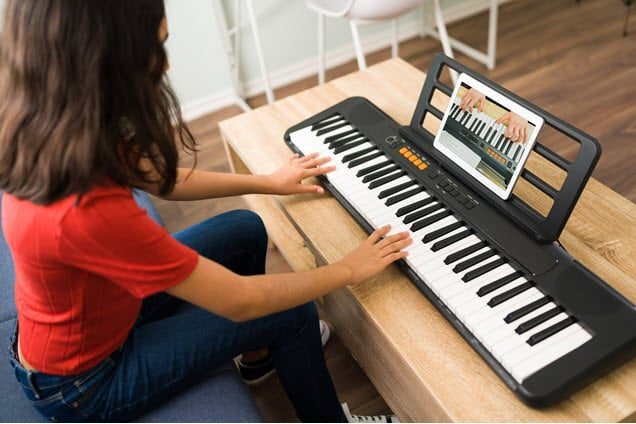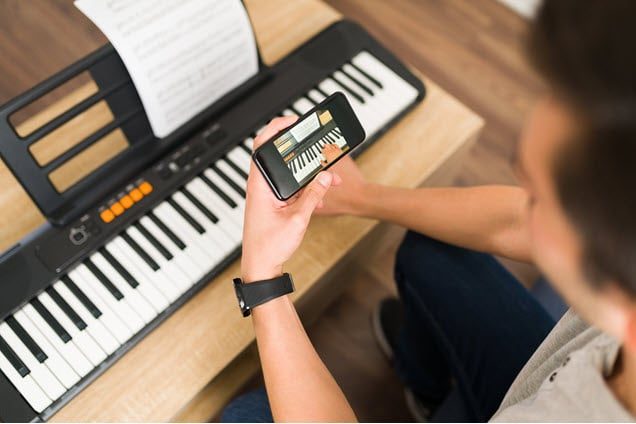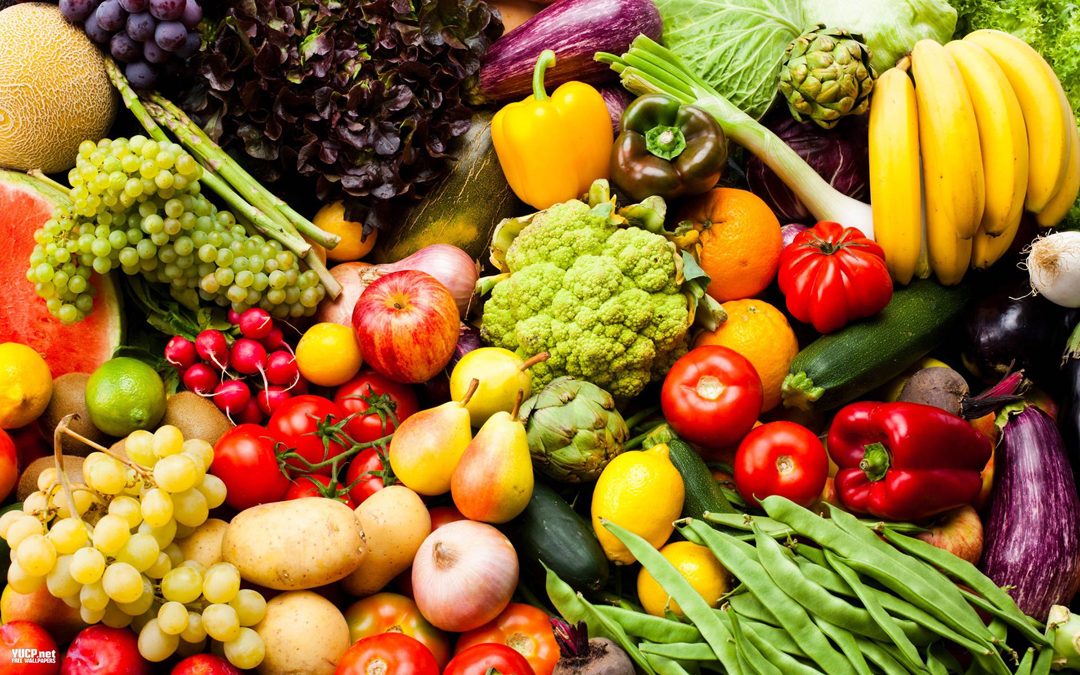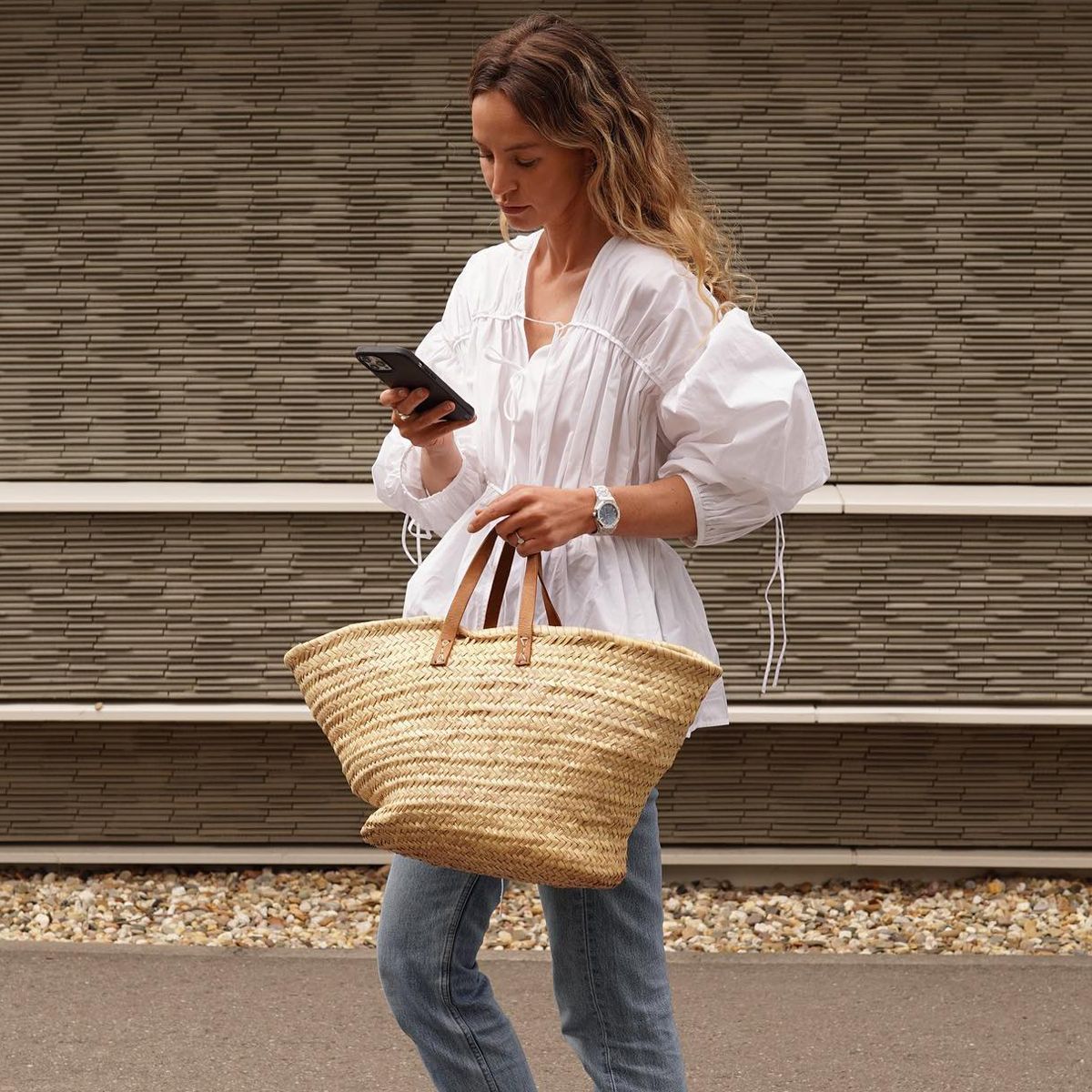The emergence of the first piano learning apps represents a pivotal moment in the marriage of music education and digital technology. In the early days of app development, innovative thinkers recognized the potential of harnessing the burgeoning power of smartphones and tablets to revolutionize how we learn piano.
The Importance Of Piano Learning Applications
These trailblazing apps were born out of a desire to make piano education more accessible, interactive, and aligned with the rapidly evolving digital landscape. As technology advanced, so did the capabilities of these apps, transforming from simple note-identifying tools to comprehensive learning platforms.
Moreover, this journey began with the fundamental idea of bringing piano lessons into the digital age, offering learners the convenience of practicing anytime, anywhere, and marking the beginning of a new era in music education.
Below, you will discover a comprehensive guide to piano learning applications and how they can help your musical career and journey.

The Evolution of Piano Learning Apps
The first piano learning apps emerged as simple yet innovative solutions to music education, capitalizing on smartphones and tablets’ rising popularity and capabilities. Their evolution over time is a testament to the rapidly advancing field of technology and its impact on learning.
Early Stages of Piano Learning Apps:
- Basic Functionality: Initially, these apps offered fundamental features like note recognition and basic rhythm exercises. They were more focused on introducing the basics of piano to beginners.
- MIDI Compatibility: Early versions started integrating MIDI (Musical Instrument Digital Interface) support, allowing the apps to communicate with digital pianos and keyboards. This feature enabled more accurate tracking of notes played by the user.
- Limited Content: The content in these early apps was relatively limited, often focusing on a small selection of songs and exercises.

Evolution and Advancements:
- Interactive Learning and Feedback: As technology advanced, apps became more sophisticated, providing interactive learning experiences. They started offering real-time feedback on playing, highlighting mistakes, and tracking progress.
- Expansive Libraries and Customization: Modern apps boast extensive music libraries across various genres, accommodating different skill levels and musical tastes. They also offer customizable learning paths tailored to individual needs.
- Gamification: Many apps introduced gamification elements, such as rewards, challenges, and levels, making learning more engaging and enjoyable, especially for younger learners.
- Augmented Reality (AR) and Virtual Reality (VR): Cutting-edge apps began experimenting with AR and VR to create immersive learning environments, offering a more hands-on experience.
- Social Features and Online Communities: Recent developments include social features that allow learners to connect with others, share performances, and participate in online communities and competitions.
- Integration with Online Platforms: Piano learning apps have started integrating with various online platforms, providing access to online lessons, video tutorials, and remote teaching.
- AI-Powered Personalization: Advanced apps use AI to analyze user performance and provide personalized exercises, making learning more efficient.
Enhancing Engagement and Motivation
Enhancing engagement and motivation is one of the critical reasons online platforms for learning to play a musical instrument have become so popular and effective. The best app for learning piano will have various digital tools and methods to keep learners interested and committed to their musical journey.

How Online Platforms Enhance Engagement and Motivation
- Interactive Learning Experiences: Online platforms often use interactive games, quizzes, and instant feedback mechanisms. These features make learning more dynamic and engaging compared to traditional methods.
- Personalized Learning Paths: Many platforms offer personalized courses based on the learner’s skill level and preferences. This personalization ensures the learning experience is relevant and challenging, keeping learners motivated.
- Convenient and Flexible Access: Accessing lessons and resources anytime and anywhere reduces barriers to learning. This convenience encourages consistent practice and exploration.
- Progress Tracking and Rewards: Digital platforms often include progress-tracking tools and reward systems. Acknowledging achievements, no matter how small, can boost a learner’s confidence and motivation.
- Variety of Musical Genres and Styles: Offering a wide range of musical genres caters to diverse tastes, encouraging learners to explore different aspects of music and find what resonates with them.

Future Trends and Innovations
The future landscape of online learning apps, particularly in music education, is set to be shaped by a fusion of technology and evolving educational needs. We’re likely to see a significant leap in personalization, with AI and machine learning tailoring content to individual learning styles and progress, making the experience uniquely resonant for each user.
Moreover, incorporating augmented and virtual reality promises to transform learning spaces into immersive environments. Additionally, this is where students can virtually step onto concert stages or practice in simulated studio settings. Wearable technology will potentially play a more significant role, offering detailed feedback on physical aspects of learning, like posture or finger placement.
Blockchain technology could emerge as a tool for validating and credentialing learning achievements, adding more weight to online education. Social learning will take on a new dimension, with apps facilitating real-time collaborations and global interactions, breaking down geographical barriers in education. Gamification and interactive storytelling are set to make learning more engaging and particularly appealing to the younger demographic.
Accessibility and inclusivity will remain at the forefront, ensuring that learning resources cater to diverse needs across different communities. Integration with smart home devices might streamline the learning process, allowing for seamless interaction with educational content.
Furthermore, a growing focus on mental and emotional well-being could see music apps incorporating elements that support these aspects, recognizing the therapeutic potential of music. Finally, sustainability might become a more pronounced theme, with apps promoting environmentally conscious practices in music learning and production.
In essence, the future of online learning apps is shaping into an exciting amalgamation of innovation, inclusivity, and interactivity. Furthermore, it’s paving the way for a more dynamic, accessible, and comprehensive educational experience.

Final Thoughts on Piano Learning Applications
In summary, the trajectory of online learning apps, particularly in the domain of music education, is steering toward a future prosperous with technological innovation, enhanced interactivity, and broader accessibility. As these platforms evolve, they promise to offer more personalized, immersive, and socially connected experiences, transforming the traditional learning paradigms.
Moreover, the future of online learning apps is not just about imparting knowledge. Additionally, it’s about creating a comprehensive ecosystem that nurtures, motivates, and connects learners in ways previously unimagined.
The post Collaborative Elements in Piano Learning Applications: A Comprehensive Guide appeared first on Sassy Townhouse Living.






